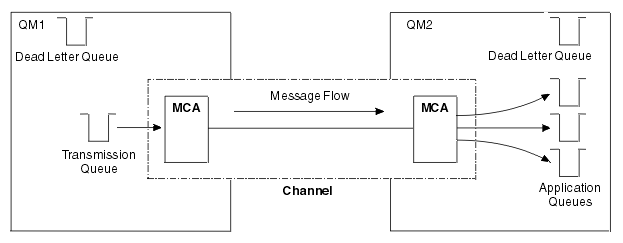Components needed to send a message
If a message is to be sent to a remote queue manager, the local queue manager needs definitions for a transmission queue and a channel.
Each end of a channel has a separate definition, defining it, for example, as the sending end or the receiving end. A simple channel consists of a sender channel definition at the local queue manager and a receiver channel definition at the remote queue manager. These two definitions must have the same name, and together constitute one channel.
There is also a message channel agent (MCA) at each end of a channel.
Each queue manager should have a dead-letter queue (also known as the undelivered message queue). Messages are put on this queue if they cannot be delivered to their destination.
Figure 1 shows the relationship between queue managers, transmission queues, channels, and MCAs.
Parent topic:
How does distributed queuing work?
ic10270_
Home
